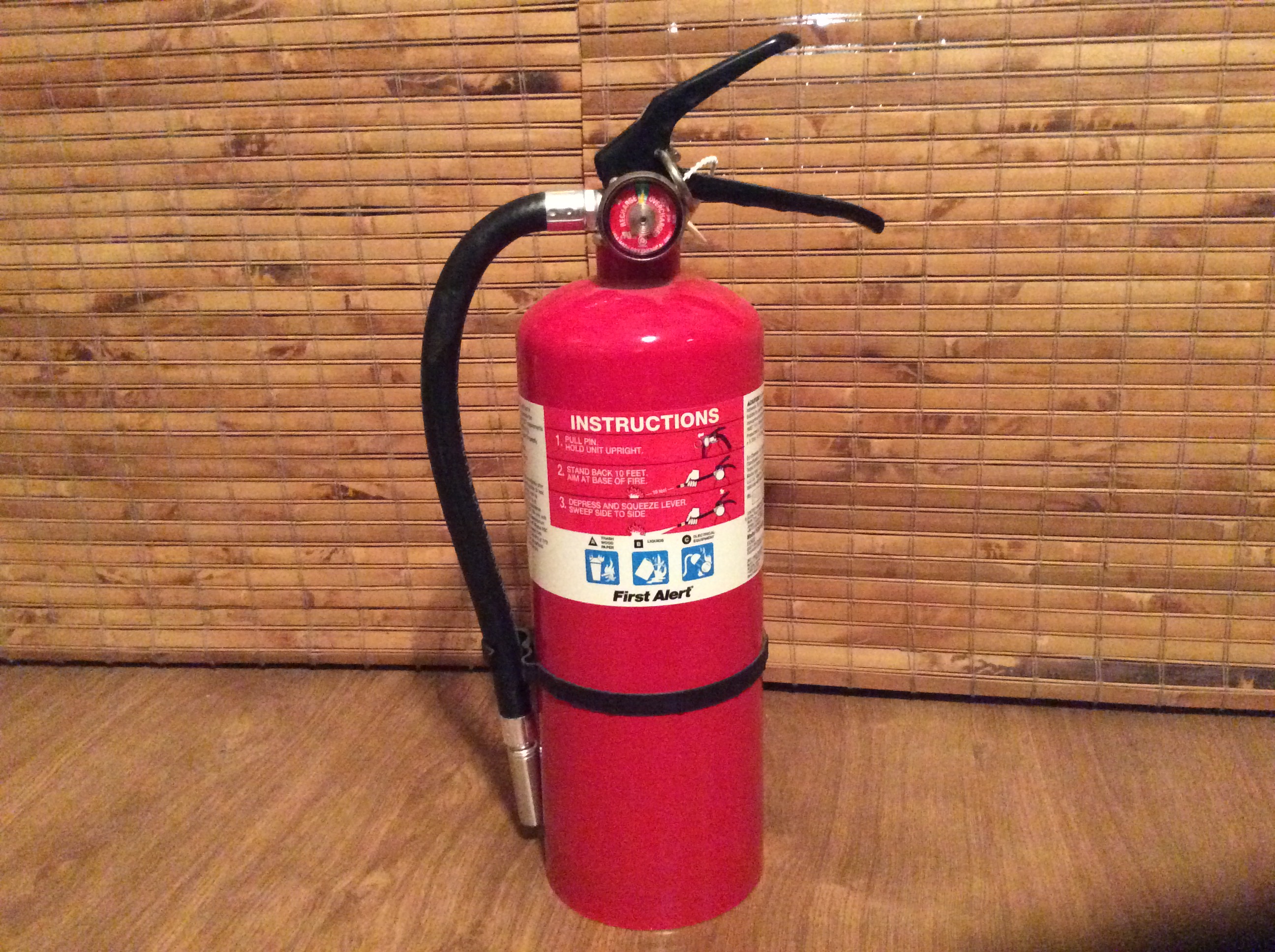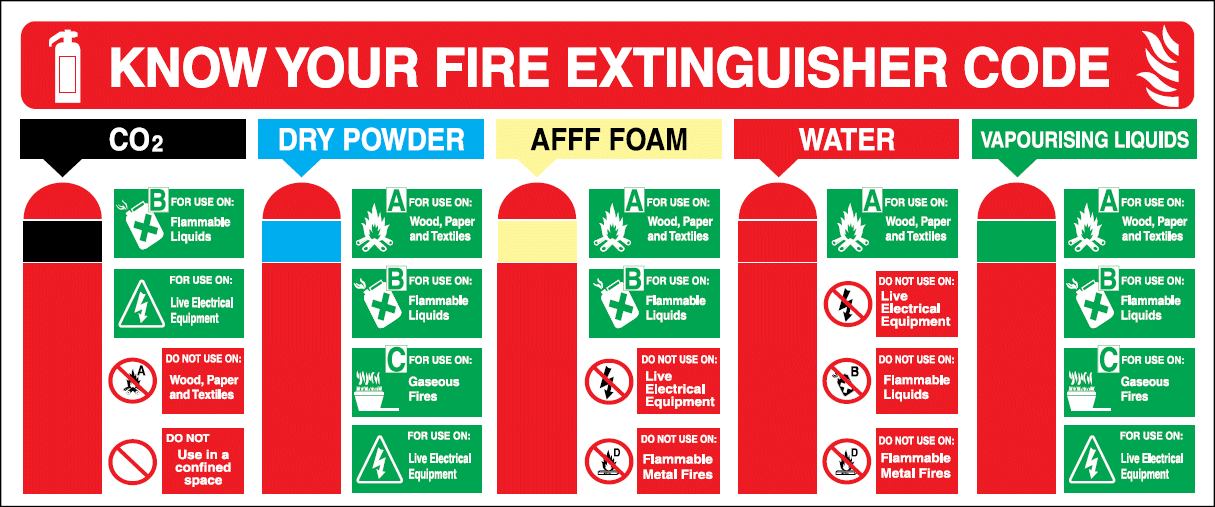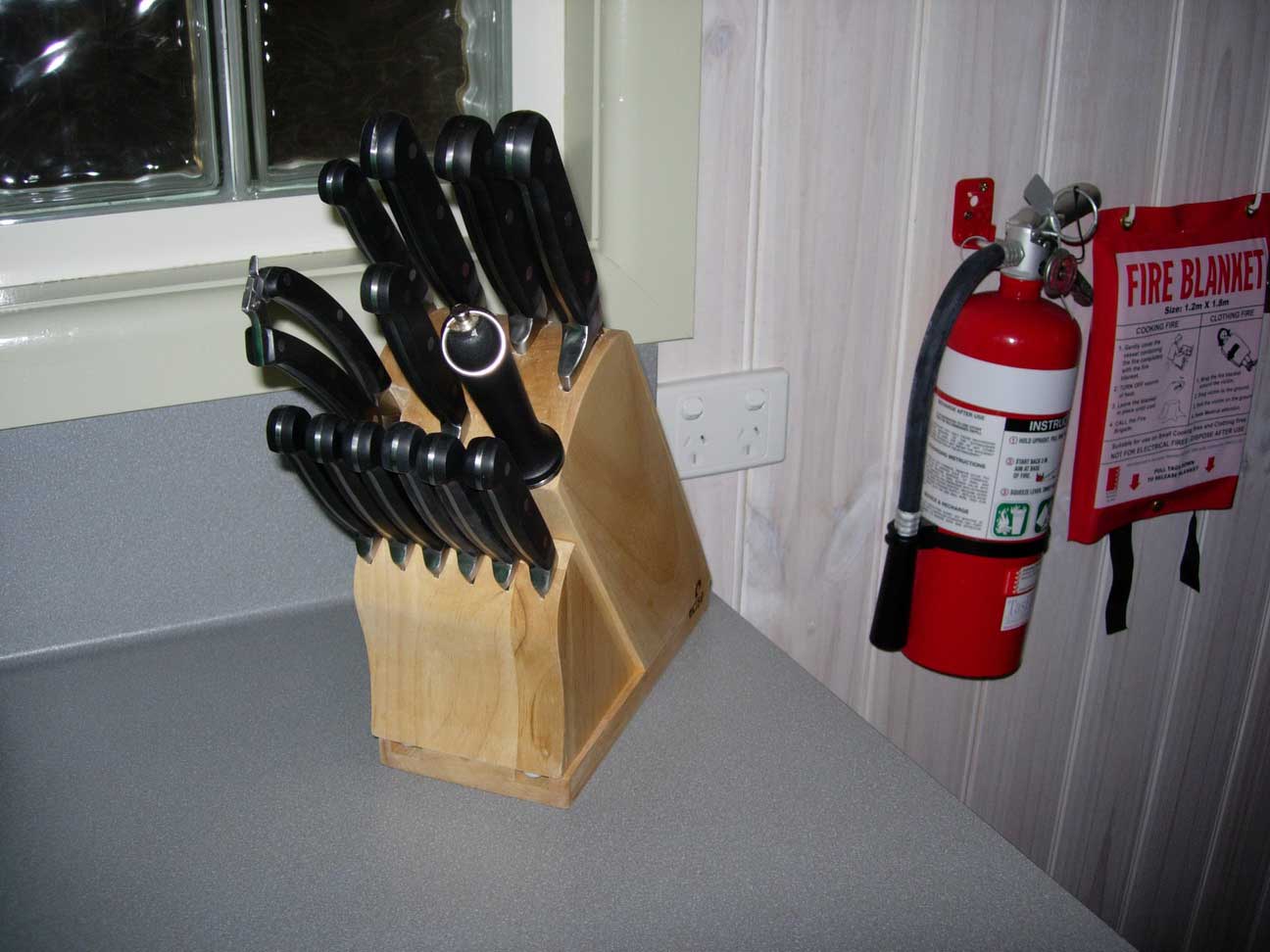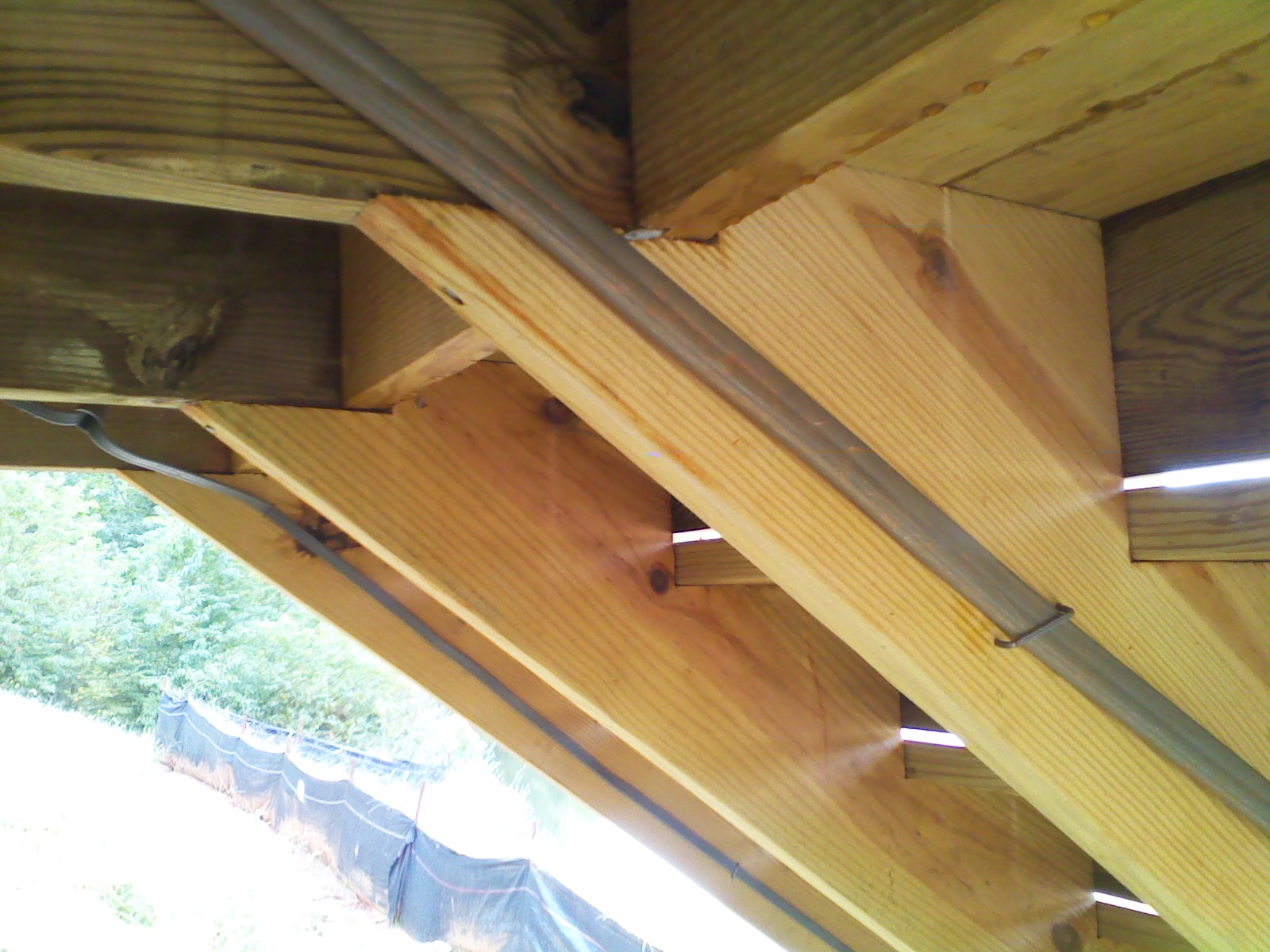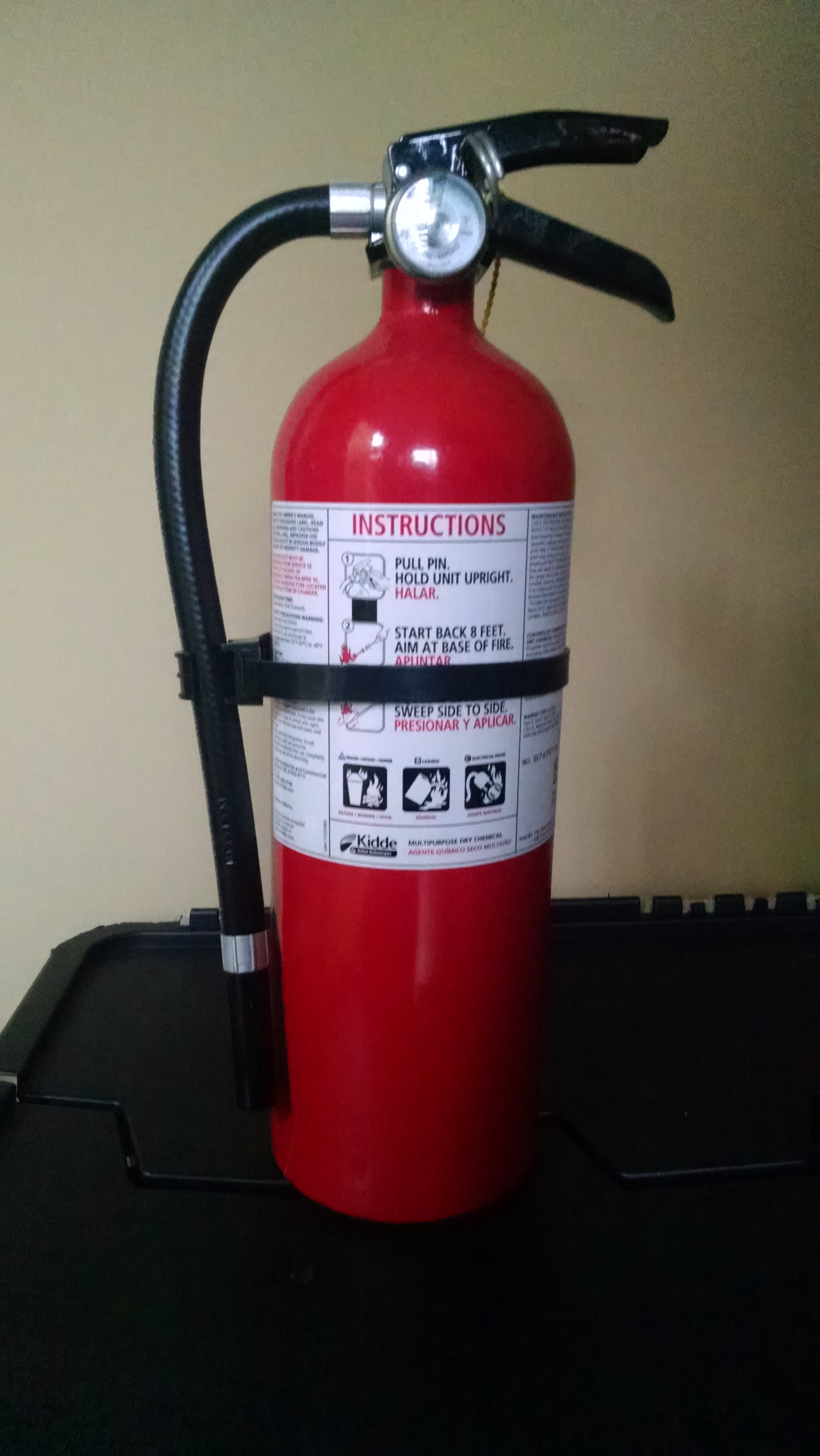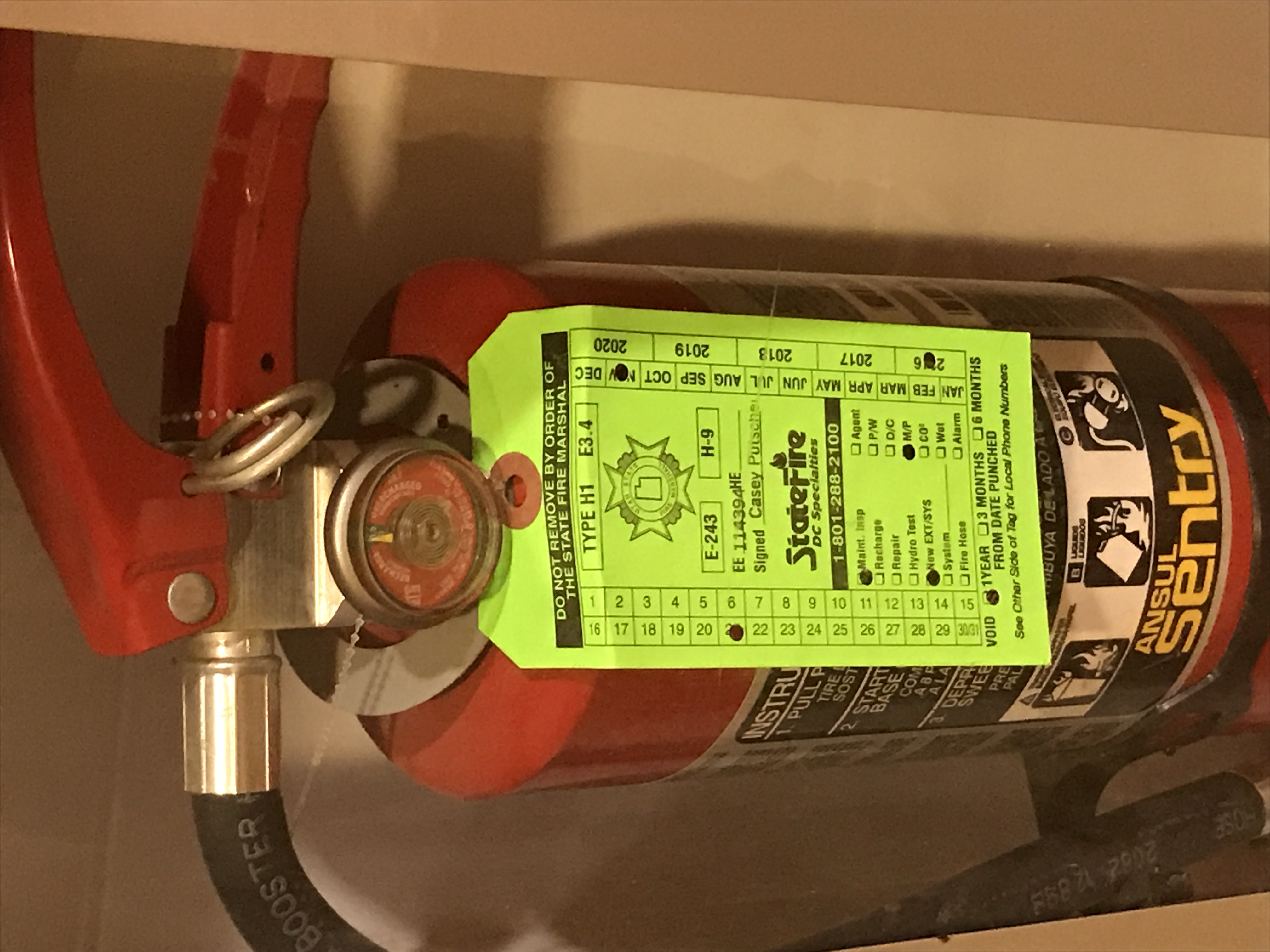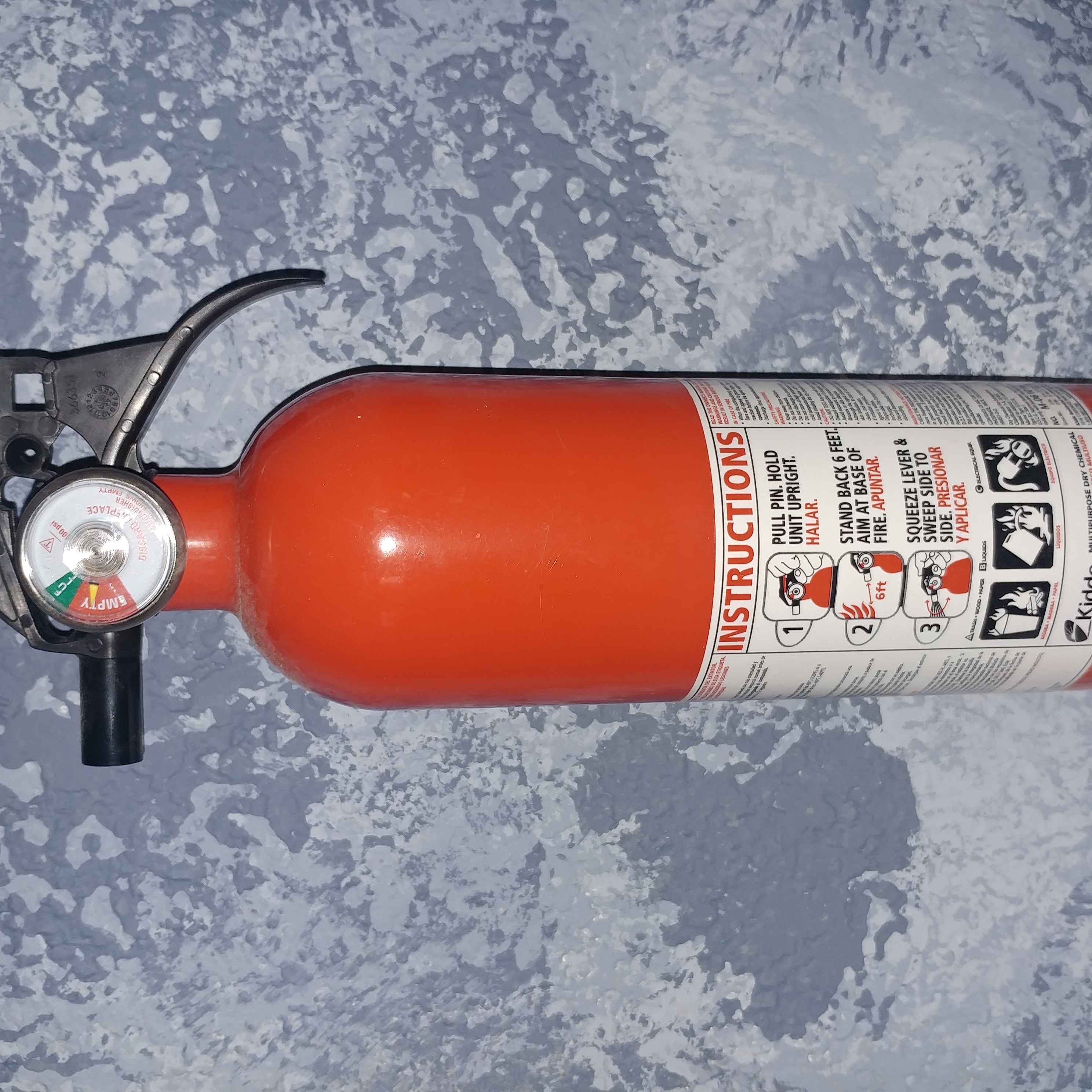The article I have chosen is Breathing Radon Gas. In the article it briefly explains the effects it has on the human body. The radioactive particles get trapped in the lungs and it can release small bursts of energy, they can cause lung damage that may or may not lead to lung cancer.
This is a picture of the fire extinguisher that I have in my house. It is a First Alert (ABC) fire extinguisher with a 2-A:10-B:C classification. This means it will extinguish trash, wood, paper (class A), liquid (class B), and electrical fires (class C). I performed a visual inspection of the hose, gauge, safety pin, labels, and exterior. I will now put my initials and date on a inspection tag.
I found a picture showing the fire protection requirements of a man door from a garage that is attached to a home. The door must have no gaps in the weatherstripping, be a solid core slab door with a minimum thickness of 1 3/8 inches, or a sheet metal door with a 20-minute fire-rating and self-closing, typically with a spring hinge.
Before this training class I did not know fire extinguishers needed to be inspected every 30 days. The inspections are relatively quick. However, a portable fire extinguisher also requires maintenance at 6 years and a hydrostatic test at 12 years.

Exercise Equipment Dangers
Kids are prone to play with things they see adults use. Which is why you should always be one step ahead and take the necessary precautions to prevent physical injury. Gym equipment have a lot of pathogens that can make you sick. Personal hygiene should be a priority and wipe the equipment down when you use equipment that is used by others.
This is my writing assignment for inspecting portable fire extinguishers course. Be sure to read the label and instructions before using the extinguisher, they are color coded for your safety and could cause harm if used improperly. If you’re not sure what color to use… run like hell and call the fire department!
Fire extinguishers are distinguished based on the types of fires on which they are effective. These fires are classified by their fuel source and assigned identifying letters as follows:
A class Fires that result from ordinary combustibles, such as wood and paper.
B class Fires that result from combustible liquids, such as kerosene, gasoline, oil, and grease.
C class Fires of an electrical nature. These result from the combustion of circuit breakers, wires, outlets, and other electrical devices and equipment. Extinguishers designed to handle this type of fire cannot use chemicals that are conductive since conductive agents increase the risk of electric shock to the operator.
D class Fires resulting from combustible metals, such as sodium, potassium, titanium, and magnesium. These fires occur mostly in chemical laboratories and are rare in most other environments.
K class These types of fires consume vegetable oils, animal fats, and generally happen in kitchens.
Note Although, technically, the letter rankings listed above refer to fire types, these symbols can also be used to identify the extinguishers themselves. For instance, an extinguisher that uses CO2 can be called a CO2 extinguisher or a BC extinguisher."
The kitchen fire extinguisher is in a readily available location. The equipment is free from defects, such as rust or dents. It is properly charged at the correct pressure. The instruction labels are easily readable. The pin is in place with a plastic tag. The extinguisher is missing the monthly check card for the year. I would make one up and attach it. Check dates for 6/12 year inspection/testing.
Fire safety for the home
We all have fire extinguishers, but do we have a plan when the time comes to a house fire?
It’s important to have a plan to escape from a fire, within your physical abilities. Fire alarms should be on each floor, and preferred to be connected to one another, for best results. Make sure you give space heaters the proper clearance, and if you smoke, do that outside. Have the correct extinguisher for the type of fire you may come into contact with. Remember if you do catch fire, to stop, drop and roll. Finally, when you witness a fire, know you’re local emergency numbers so the fire department can respond quickly.
I learned several things about inspecting a fire extinguisher. One that operation instruction’s must be visible and are legible. That a month quick check tag and documentation of the inspections is required. That you have to inspect the hose for cracks and the best way of doing that is to flex the hose both ways.

In this article I Learned that the locations of the thermostat could cause a problems with ghost reading which could cause the furnace and air conditioner cycling. Putting them next to a heat source such as fireplace, windows, exterior doors and walls.
The inspecting of fire extinguishers can be a interesting learning event. When checking these devices be sure to not when they are not in very accessible locations in case of a fire. Replacing when necessary to ensure there is not a false sense of security.
The inspecting of fire extinguishers can be a interesting learning event. When checking these devices be sure to not when they are not in very accessible locations in case of a fire. Replacing when necessary to ensure there is not a false sense of security.
Workplace fires and explosions kill hundreds and injure thousands of workers each year. One way to limit the amount of damage due to such fires is to make portable fire extinguishers an important part of your fire prevention program. A fire extinguisher is a fire protection device used to extinguish or control small fires in emergency situations. Most households will commonly use the dry chemical bottle that will handle (A) Trash, Wood or Paper, (B) Liquids and © Electrical.
Having fire extinguishers in your home and knowing how to use them is a crucial part of your homes emergency plan. While it can be tempting to use an extinguisher for any fire in your home, you have to be aware of the fact that they should really only be used for fires that are very small and contained.
Hello Everyone my name is Jose Caba , Im new to internachi. The Residential Fire Extinguisher Inspector log is super nice cant wait until i get mine.
Good luck to everyone, there a lot of stuff that have great knowledge.
Jose
as I took this course I was surprised to learn that extinguishers should be inspected monthly. the photo I took was an extinguisher that has a tag indicating it is inspected annually witch is a state requirement I am thinking that a lot of extinguishers are going under inspected.
fire extinguisher inspection
having a handy fire extinguisher can be the difference of a reparable damage and a total loss of a structure having one close and ready can make a huge difrace. I think about how many fries in homes and in the forest could have been prevented in one where ready to be used. I try to have one with me when looking at electrical work on homes I inspect.
This portable fire extinguisher’s gauge is indicating that the extiguisher is empty. The extinguisher is also missing the safety pin. This extinguisher should either be taken to a qualified company to be refilled or a more cost effective method might be to just replace this particular extinguisher.
Residential portable fire extinguishers should be visually examined monthly. During the inspection I would check for any dents or deep scratches. I would also make sure the safety pin was in place and secured with a approved safety strap. I would also check the hose for any signs of cracking or holes.
